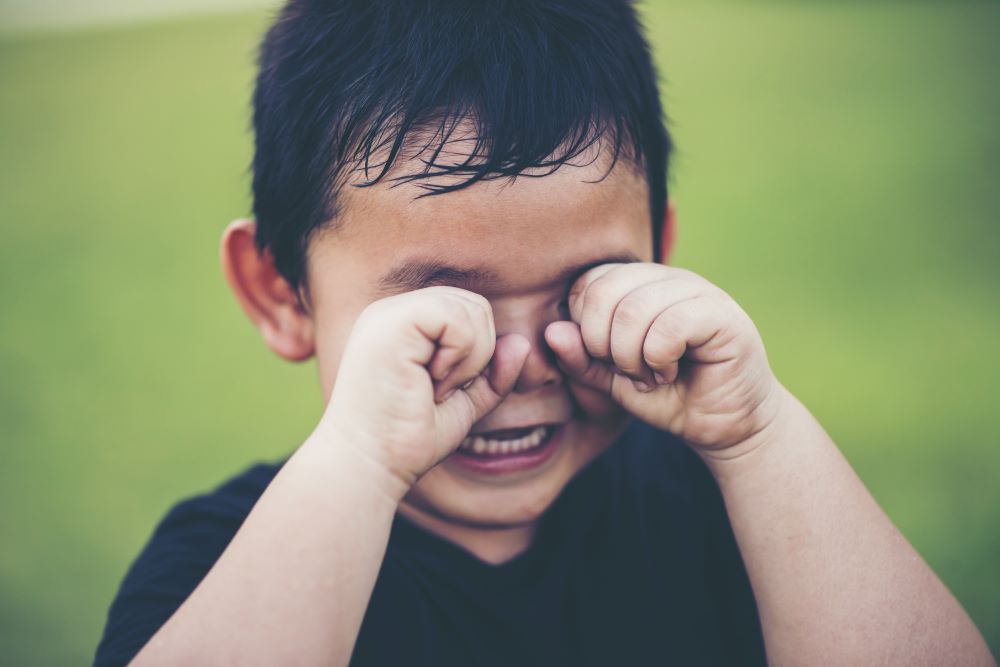There are many times when your child’s behavior warms and embraces your heart. But, there are other times when it probably drives you a little crazy. As a toddler or preschooler, your child may lack the self-control to express anger peacefully and may naturally lash out, perhaps hitting or biting in frustration.
Things you can do to shape your child’s behavior.
1. Teach the house rules.
Children don’t know the rules of the house until they’re taught them, so that is one of your important parenting responsibilities. Toddlers are normally interested in touching and exploring, so if there are valuables you don’t want them to handle, hide or remove them. Consider setting up a separate portion of your home where your child can play with books and toys. Whenever children break an important rule, they should be reprimanded immediately to understand exactly what they have done wrong.
2. Threats are over-rated.
It is always more effective to positively reinforce desired behaviors and to teach children alternative behaviors rather than just say, “Stop it or else.” Tell them that the next time they are angry, they should use their words instead.
3. Enter healthy distractions.
While teaching your child other ways to respond, there’s also nothing wrong with distracting him at times or trying another approach. As long as you’re not “bribing” him to behave differently by offering sweet snacks. For example, there’s nothing wrong with intentionally changing his focus.
4. “Control yourself.”
Well, they can’t yet. Remember, toddlers have little natural self-control. They need you to teach them not to kick, hit, or bite when they are angry, but instead to express their feelings through words.
5. “We don’t hurt each other.”
Supervise your child carefully when she is involved in disputes with playmates. If a disagreement is minor, keep your distance and let the children solve it on their own. However, you must intervene when children get into a physical fight that continues even after they’re told to stop, or when one child seems to be in an uncontrollable rage and is assaulting or biting the other. Pull the children apart and keep them separate until they have calmed down. If the fight is extremely violent, you may have to end the play session. Make it clear that it doesn’t matter who “started it.” There is no excuse for trying to hurt each other.
6. Instead of fighting.
Teach your child to say “no” in a firm tone of voice, to turn his back, or to find compromises instead of fighting with his body. Through example, you are teaching your child to settle differences with words —more effective and more civilized—than with physical violence.
7. “Great job!”
Praise your child for appropriate behavior and help explain how “grown-up” she is acting whenever she uses these tactics instead of hitting, kicking, or biting. And always reinforce and praise behavior when you catch your child being kind and gentle.
8. Time-outs are OK.
There’s also nothing wrong with using a time-out when your child’s behavior is inappropriate, and they can be used in children as young as one year old. See How to Give a Time-Out (/English/family-life/family-dynamics/communication-discipline/Pages/Time-Outs-101.aspx) for more information.
9. Control your own temper.
Always watch your own behavior around your child. One of the best ways to teach him appropriate behavior is to control your own temper. If you express your anger in quiet, peaceful ways, your child probably will follow your example.
10. Stay strong.
If you must discipline your child, do not feel guilty about it and certainly don’t apologize. If your child senses your mixed feelings, he will convince himself that he was in the right all along and you are the “bad” one. Although disciplining your child is never pleasant, it is a necessary part of parenthood, and there is no reason to feel guilty about it. Your child needs to understand when he is in the wrong, it is important to take responsibility for his actions and be willing to accept the consequences.

What’s the difference between discipline and punishment?
While many parents think that discipline and punishment are the same thing, they are not.
- Discipline is a way of teaching and a way of enhancing a good parent-child relationship. When you discipline, you should provide your child with praise along with instruction in a firm tone, with the intent of improving his or her behavior.
- Punishment is a negative, in which you’re dispensing an unpleasant consequence when your child does or doesn’t do something. Punishment is a part of discipline, but only a small part.
Until age three and sometimes later, children simply don’t understand the concept of punishment. Setting limits is a much better approach than punishment; most children will respond to clear, calm, and decisive limit-setting.
When to Call the Pediatrician:
If your child seems to be unusually aggressive for longer than a few weeks, and you cannot cope with his behavior on your own, consult your pediatrician. Other warning signs include:
- Physical injury to himself or others (teeth marks, bruises, head injuries)
- Attacks on you or other adults
- Being sent home or barred from play by neighbors or school
- Your own fear for the safety of those around him
The most important warning sign is the frequency of outbursts. Sometimes children with conduct disorders (/English/health-issues/conditions/emotional-problems/Pages/Behavioral-and-Disruptive-Disorders.aspx) will go for several days or a week or two without incident and may even act quite charming during this time, but few can go an entire month without getting into trouble at least once.
Once several effective ways are found to reward good behavior and discourage bad, they can be used in establishing an approach that works both at home and away. The progress may be slow, but such programs usually are successful if started when the disorder is just beginning to develop.
Remember:
The best way to prevent aggressive behavior is to give your child a stable, secure home life with firm, loving discipline and full-time supervision during the toddler and preschool years.
Source: https://healthychildren.org/




